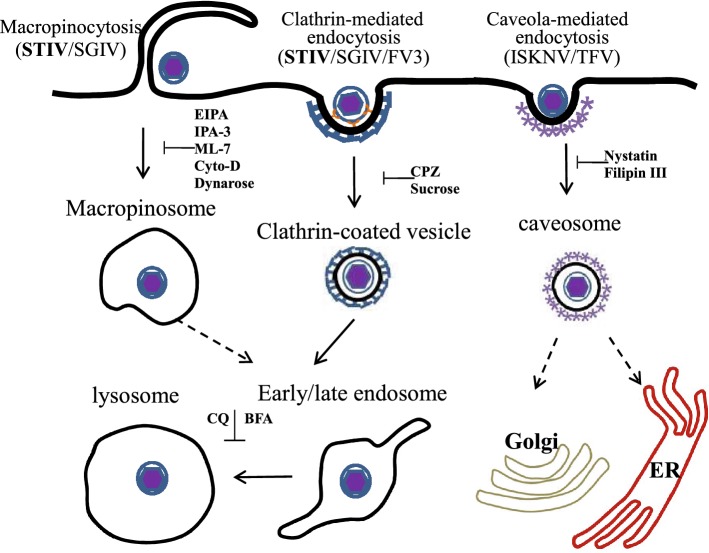Fig. 6.
Molecular mechanism of iridovirus entry. (1) Clathrin-mediated endocytosis used by FV3, SGIV and STIV, could be inhibited by CPZ and sucrose. Virus particles were internalized and formed clathrin-coated vesicles (CCVs), then CCVs were uncoated and virus was transported into the endosome, and finally into the lysosome; (2) Caveola-dependent endocytosis, used by TFV and ISKNV, could be inhibited by nystatin and filipin III. Virus particles were internalized into host cells via caveolae and dependent on the microtubules via a caveola-caveosome-endoplasmic reticulum (ER) pathway; (3) Macropinocytosis, used by STIV and SGIV, could be inhibited by EIPA, IPA-3 and cyto-D. Virus particles were internalized and formed macropinosomes. Viruses might then be transported via the late endosome to the lysosome

